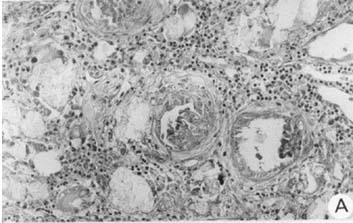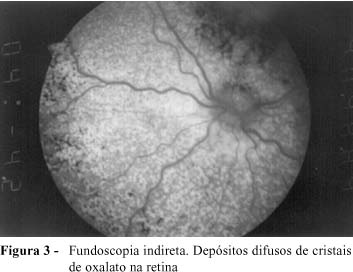Objective: to report a case of an infant with endstage renal failure caused by primary hyperoxaluria. Methods: the review of the literature showed the rarity of the disease. In France, the prevalence is about 1.05/million and the incidence rate is 0.12/million/year. A survey, performed in international specialized centers in 1999, documented 78 cases in infants; in 14% of them the initial onset symptom was uremia. The rarity and severity of the disease justify the description of this case.Results: a girl presenting vomiting and failure to thrive within the first months of life developed endstage renal failure at 6 months of age. She was being treated with dialysis. At 8 months of age, she was referred for investigation. She was undernourished and the laboratory examinations showed urea (69mg/dl), creatinine (2.2 mg/dl) and creatinine clearance (12.5 ml/min/1.73m²SA). The routine urinalysis was normal, the renal ultrasound showed increased echogenicity in both kidneys; the dosage of urinary oxalate was 9.2mg/kg/day or 0.55mmol/1.73m²SA; the urinary oxalate/creatinine ratio was 0.42. Renal biopsy showed calcium oxalate crystals throughout the renal parenchyma. The radiograph of long bones showed osteopathy and the ophthalmic examination showed flecked retinopathy. The child was treated with continuous ambulatory peritoneal dialysis and administration of pyridoxine was initiated.Conclusions: primary hyperoxaluria should be considered as a differential diagnosis for endstage renal failure in infants, especially if there are no symptoms of other diseases.
infant; endstage renal failure; primary hyperoxaluria; systemic oxalosis




